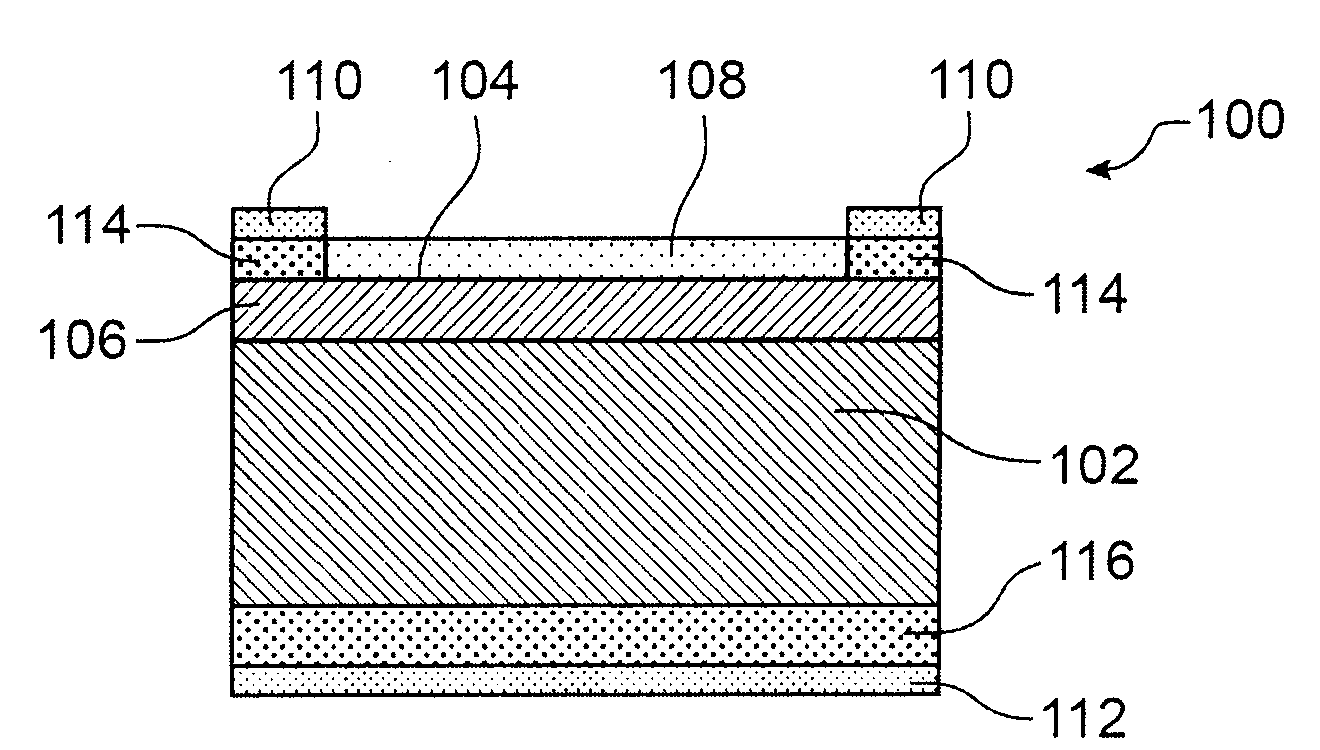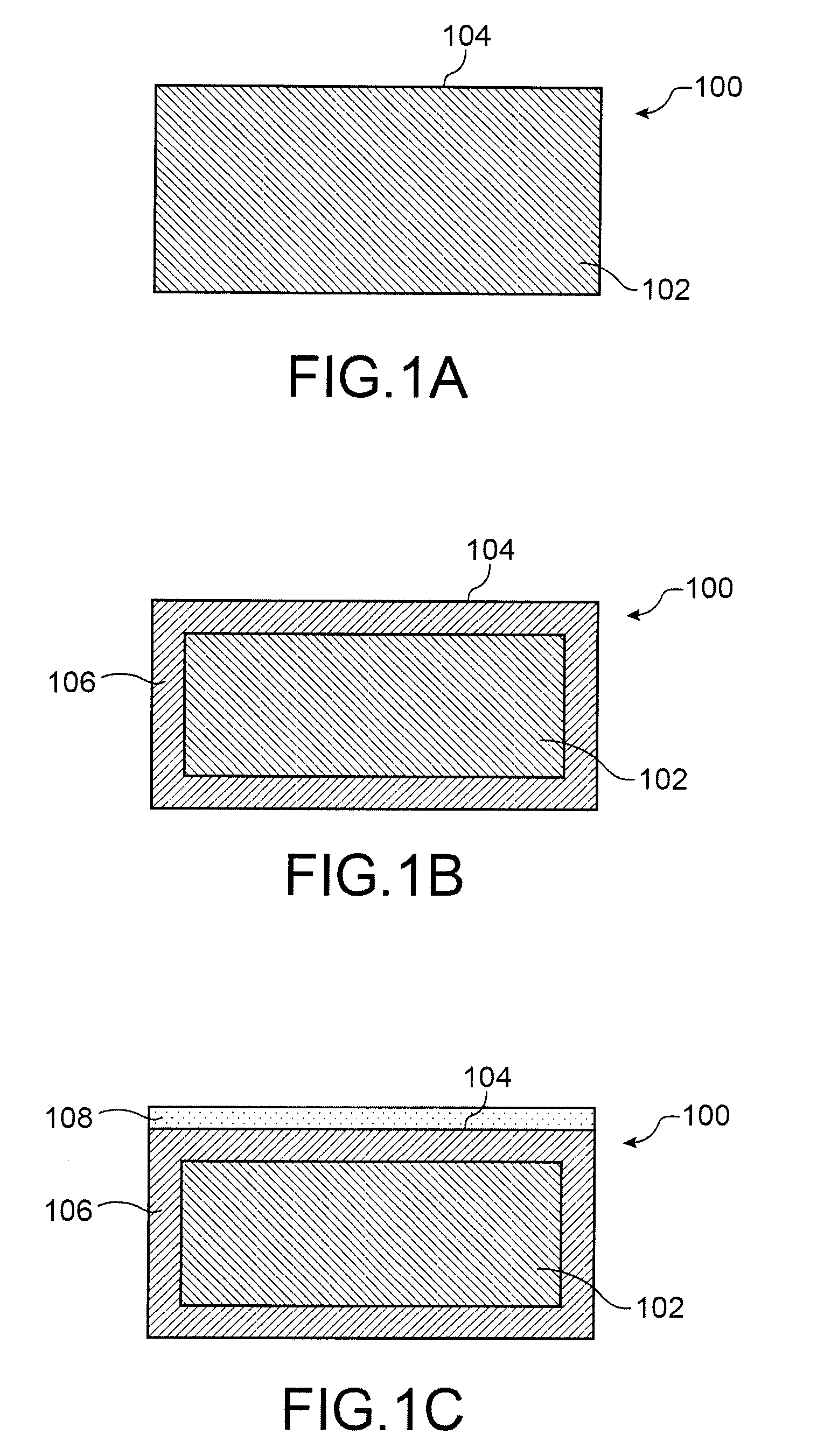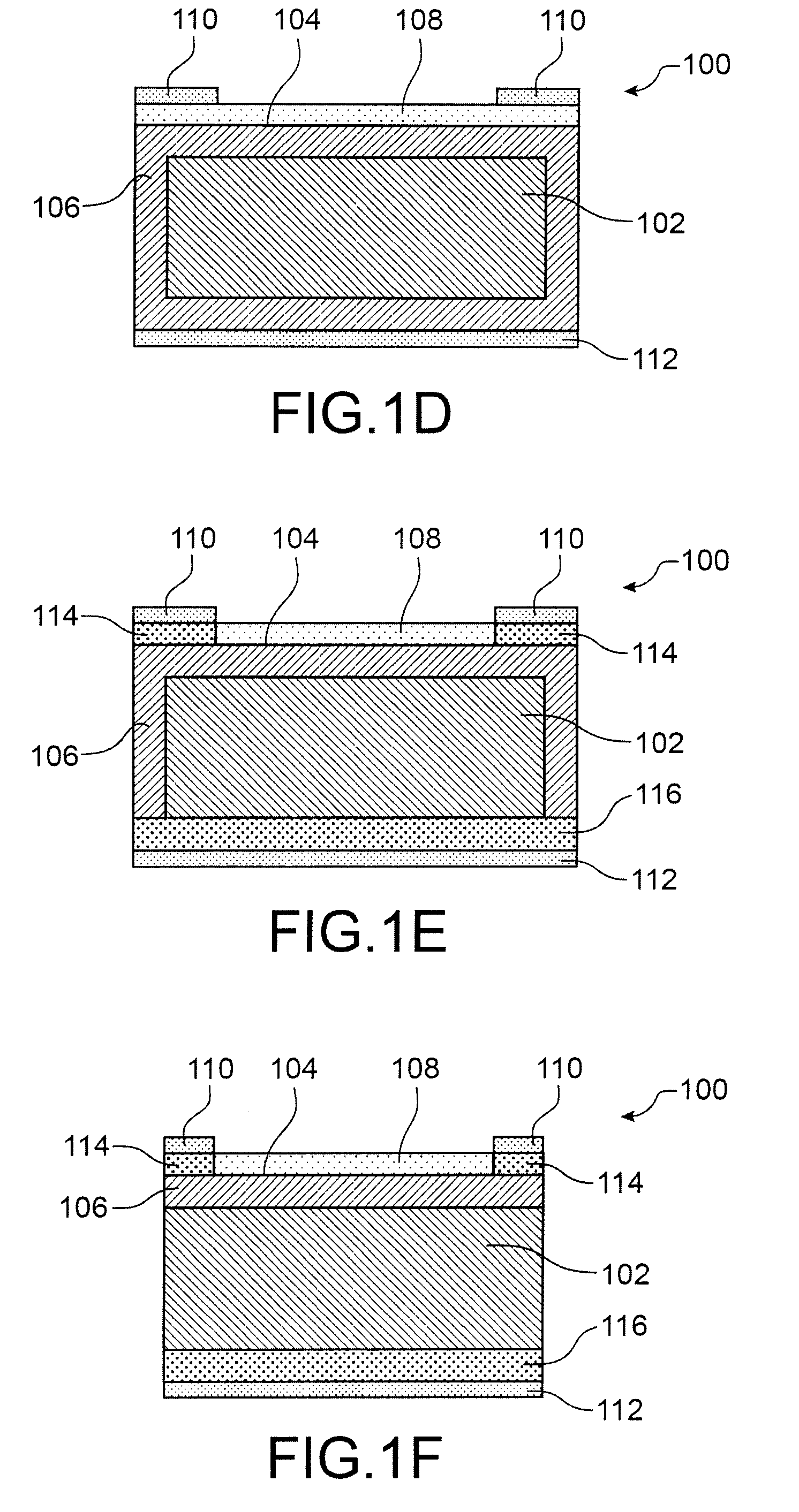Method of processing a semiconductor substrate by thermal activation of light elements
a technology of light elements and semiconductors, applied in the direction of photovoltaic energy generation, crystal growth process, electrical equipment, etc., can solve the problems of significant degradation of the efficiency of the photovoltaic cells produced from this silicon, the efficiency of the photovoltaic cells such as this remains lower than the efficiency of the photovoltaic cells made with electronic-grade silicon substrates, and the excessive quantity of doping impurities. to achieve the effect of improving the electrical quality of the semiconductor
- Summary
- Abstract
- Description
- Claims
- Application Information
AI Technical Summary
Benefits of technology
Problems solved by technology
Method used
Image
Examples
Embodiment Construction
[0067]Reference is made first to FIGS. 1A to 1F, which show the steps of a method of producing a photovoltaic cell 100 according to a first exemplary embodiment.
[0068]As shown in FIG. 1A, the photovoltaic cell 100 is produced from a semiconductor-based substrate 102, e.g., p-type crystalline silicon. This silicon, e.g., monocrystalline and obtained by Cz growth, comprises significant concentrations of doping impurities, and born in particular. These concentrations, for example, may be between approximately 1015 cm−3 and 3.1018 cm−3. Furthermore, given that this silicon was obtained by Cz growth, it likewise comprises a significant quantity of light elements, particularly oxygen, which, for example, may be between approximately 1017 cm−3 and 5.1018 cm−3.
[0069]To produce the photovoltaic cell 100, a texturing of the face 104 of the substrate 102 is first carried out, this face 104 being intended to form the front face of the photovoltaic cell 100, i.e., the face intended to receive th...
PUM
 Login to View More
Login to View More Abstract
Description
Claims
Application Information
 Login to View More
Login to View More - R&D
- Intellectual Property
- Life Sciences
- Materials
- Tech Scout
- Unparalleled Data Quality
- Higher Quality Content
- 60% Fewer Hallucinations
Browse by: Latest US Patents, China's latest patents, Technical Efficacy Thesaurus, Application Domain, Technology Topic, Popular Technical Reports.
© 2025 PatSnap. All rights reserved.Legal|Privacy policy|Modern Slavery Act Transparency Statement|Sitemap|About US| Contact US: help@patsnap.com



